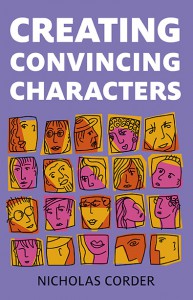
 In truth, anyone can write a first novel. The proof of a
writer’s talent comes from the second and subsequent books and the creation of a completely different set of characters for each new story. Or as Gore Vidal observed: “Each writer is born
with a repertory company in his head. Shakespeare has perhaps twenty players ... I have ten or so, and that’s a lot. As you get older, you become more skilled at casting them.” In
other words, as we become more experienced we become better at re-casting our players into completely different roles.
In truth, anyone can write a first novel. The proof of a
writer’s talent comes from the second and subsequent books and the creation of a completely different set of characters for each new story. Or as Gore Vidal observed: “Each writer is born
with a repertory company in his head. Shakespeare has perhaps twenty players ... I have ten or so, and that’s a lot. As you get older, you become more skilled at casting them.” In
other words, as we become more experienced we become better at re-casting our players into completely different roles.
Characters make or break a story and unless we can encourage reader-empathy for our creations then our novels will lack reader-appeal simply because the reader needs to engage with the people he or she is reading about. Second novels often fail miserably because the author has run out of imagination when it comes to creating a new cast of characters, or they’re merely cardboard cut-outs devoid of life or personality, or just simply miscast.
Characters can often be influenced by the screen adaptation of a novel – but not always with success. Most of us were reasonably content with the portrayal of the characters in ‘The Lord of the Rings’, who were flamboyant, exotic creatures from a realm of fantasy drawn from the brilliant pen of JRR Tolkien. And although the actor who plays ‘Inspector Montalbano’ in the popular television series is nothing like the description of Andrea Camilleri’s moustachioed curmudgeon, the adaptation has transformed the character into a sex symbol. On the other hand, Lee Child’s character Jack Reacher is a testosterone-driven six foot five inches and weighs in at 250lbs – so who does the film industry get to portray him? Tom Cruise no less who comes from the Alan Ladd School of Body Building and doesn’t fit the mental image that the readership has built up over the years.
At the start of ‘Leaving This World’ Douglas Kennedy gives one of his characters this reflection: “All novels are about crisis and how an individual or a set of individuals – negotiates said crisis. More than that, when we first meet a character in a narrative, we are dealing with him in the present moment. But he has a back story, just like the rest of us. Whether it’s in real life or on the page, you never understand somebody until you understand their back story.” And if nothing else were ever written apart from these brief words of wisdom, that tells us everything we need to know about creating convincing characters in a novel.
‘Creating Convincing Characters’ by Nicholas Corder shows us how to create that essential back story for those characters we need for a second or subsequent novel because the one we used for our
first novel was largely drawn from autobiographical material or composites of people from the real world. In other words we need to learn how to ‘recast’ our characters from Vidal’s
fictional ‘repertory company’ and since Nicholas Corder’s talents also include playwriting, he’s just the man to show us how to do it.
- eBook £6.99 || $9.99
- Aug 29, 2014. 978-1-78279-163-8.
- BUY | AMAZON US | AMAZON UK
- Paperback £8.99 || $14.95
- Aug 29, 2014. 978-1-78279-164-5.
- BUY | AMAZON US | AMAZON UK
Categories:
0 comments on this article







